Ok, So I have been attempting to translate a little leaflet I have, and too be honest I don't think I did a bad job. Using an assortment of programs, books and a great deal of research I think this mans military career is starting to unfold.
I am certain I have gotten a few things wrong, but how do you think I went???
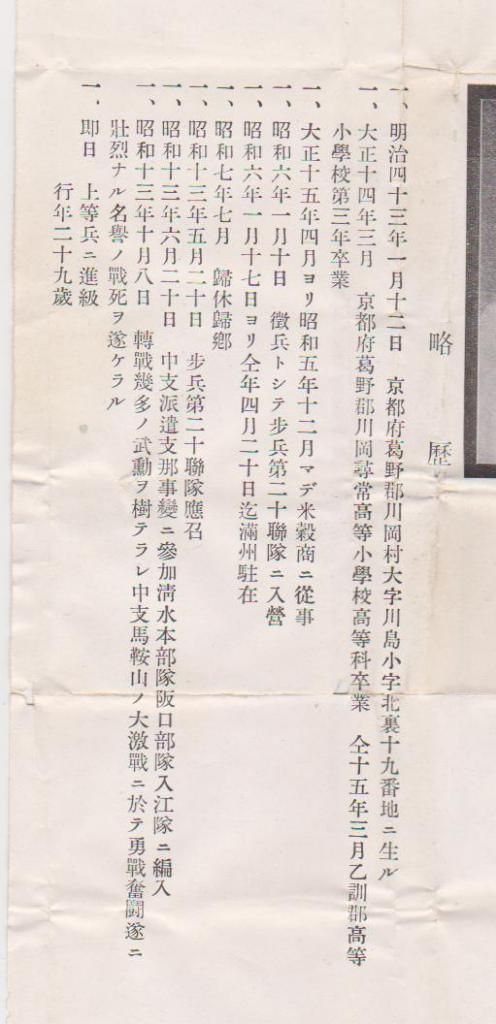
FRONT
故陸軍兵上等兵 藤田利一君 - Late Army Infantry Private first class Fujita Toshikazu Mr.
略 歴 - Career
明治四十三年一月十二日 京都府葛野郡川岡村大字川島小字北襲十九番地二生 - January 12,1910. Kyoto Prefecture, Kadono County, Kawaoka Village, Birth
大正十四年三月 京都府葛野郡川岡尋常高等小學校高等科卒業 仝十五年三月乙訓郡高等小學校第三年卒業 - March 1925. Graduated from school
大正十年四月ョリ昭和五年十二月マデ米穀商=從事 - April 1921. to December 1930. ???
昭和六年一月十日 徴兵卜ツテ歩兵第二十聯隊=入營 - January 10, 1931. Conscripted into the 20th Regiment = Entered camp.
昭和六年一月十七日ョリ仝年四月二十日迄滿州駐在 - January 17, 1931. to April 20, Stationed in Manchuria
昭和七年七月 歸 休 歸 郷 - July 1932. Discharged to hometown
昭和十三年五月二十日 歩兵第二十聯隊廡召 - May 20, 1938. Called back to the 20th Infantry Regiment
昭和十三年六月二十日 中支派遣支那事變=參加倩水本 - June 20, 1938. China Expeditionary Army dispatched to China =
昭和十三年六月二十日 中支派遣支那事變=參加倩水本部隊阪口部隊入江隊=編入 - June 20,1938. China Expeditionary Army in China = Joined the Sakaguchi unit,creek corps? = Entered compilation
昭和十三年十月八日 轉戰幾多ノ武勳ヲ樹テラレ中支馬鞍山ノ大激戰=於テ男戰奮鬪逐=壯烈ナル名譽ノ戰 死ヲ逐ケラル - October 8, 1938. ???
即日上等兵=進級 – Same day Private first class = Promoted
行年二十九歳 – 29 years of age.
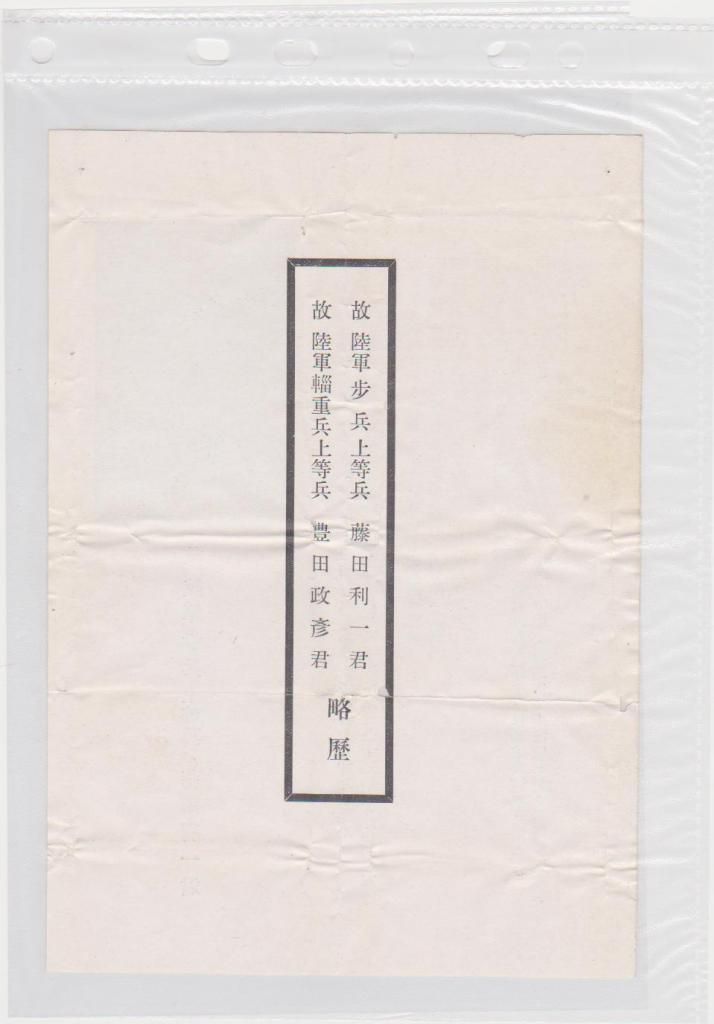
BACK- Why would 2 peoples names be mentioned here?
故陸軍步兵上等兵 藤田利一君 - Late Army Infantry Private first class Fujita Toshikazu Mr.
故陸軍輜重兵上等兵 豊田政彦君 - Late Army Logistics Officer Private first class Toyoda Masahiko Mr.
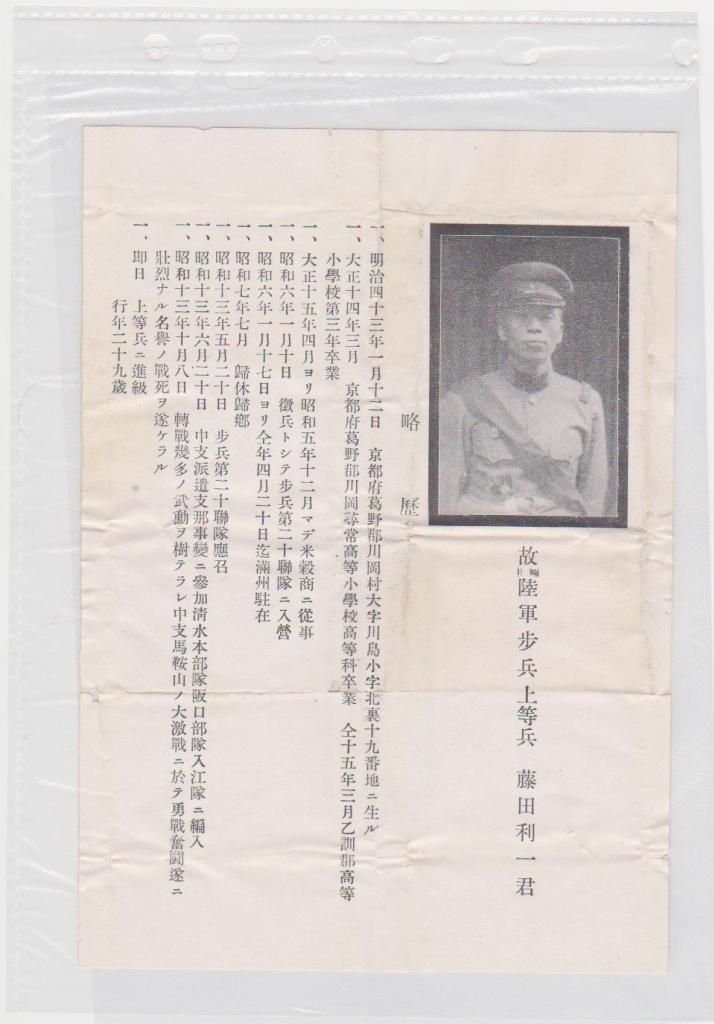
How do you think I went? Epic fail or keep on trying?
Many thanks in advance.
I am certain I have gotten a few things wrong, but how do you think I went???

FRONT
故陸軍兵上等兵 藤田利一君 - Late Army Infantry Private first class Fujita Toshikazu Mr.
略 歴 - Career
明治四十三年一月十二日 京都府葛野郡川岡村大字川島小字北襲十九番地二生 - January 12,1910. Kyoto Prefecture, Kadono County, Kawaoka Village, Birth
大正十四年三月 京都府葛野郡川岡尋常高等小學校高等科卒業 仝十五年三月乙訓郡高等小學校第三年卒業 - March 1925. Graduated from school
大正十年四月ョリ昭和五年十二月マデ米穀商=從事 - April 1921. to December 1930. ???
昭和六年一月十日 徴兵卜ツテ歩兵第二十聯隊=入營 - January 10, 1931. Conscripted into the 20th Regiment = Entered camp.
昭和六年一月十七日ョリ仝年四月二十日迄滿州駐在 - January 17, 1931. to April 20, Stationed in Manchuria
昭和七年七月 歸 休 歸 郷 - July 1932. Discharged to hometown
昭和十三年五月二十日 歩兵第二十聯隊廡召 - May 20, 1938. Called back to the 20th Infantry Regiment
昭和十三年六月二十日 中支派遣支那事變=參加倩水本 - June 20, 1938. China Expeditionary Army dispatched to China =
昭和十三年六月二十日 中支派遣支那事變=參加倩水本部隊阪口部隊入江隊=編入 - June 20,1938. China Expeditionary Army in China = Joined the Sakaguchi unit,creek corps? = Entered compilation
昭和十三年十月八日 轉戰幾多ノ武勳ヲ樹テラレ中支馬鞍山ノ大激戰=於テ男戰奮鬪逐=壯烈ナル名譽ノ戰 死ヲ逐ケラル - October 8, 1938. ???
即日上等兵=進級 – Same day Private first class = Promoted
行年二十九歳 – 29 years of age.

BACK- Why would 2 peoples names be mentioned here?
故陸軍步兵上等兵 藤田利一君 - Late Army Infantry Private first class Fujita Toshikazu Mr.
故陸軍輜重兵上等兵 豊田政彦君 - Late Army Logistics Officer Private first class Toyoda Masahiko Mr.

How do you think I went? Epic fail or keep on trying?

Many thanks in advance.




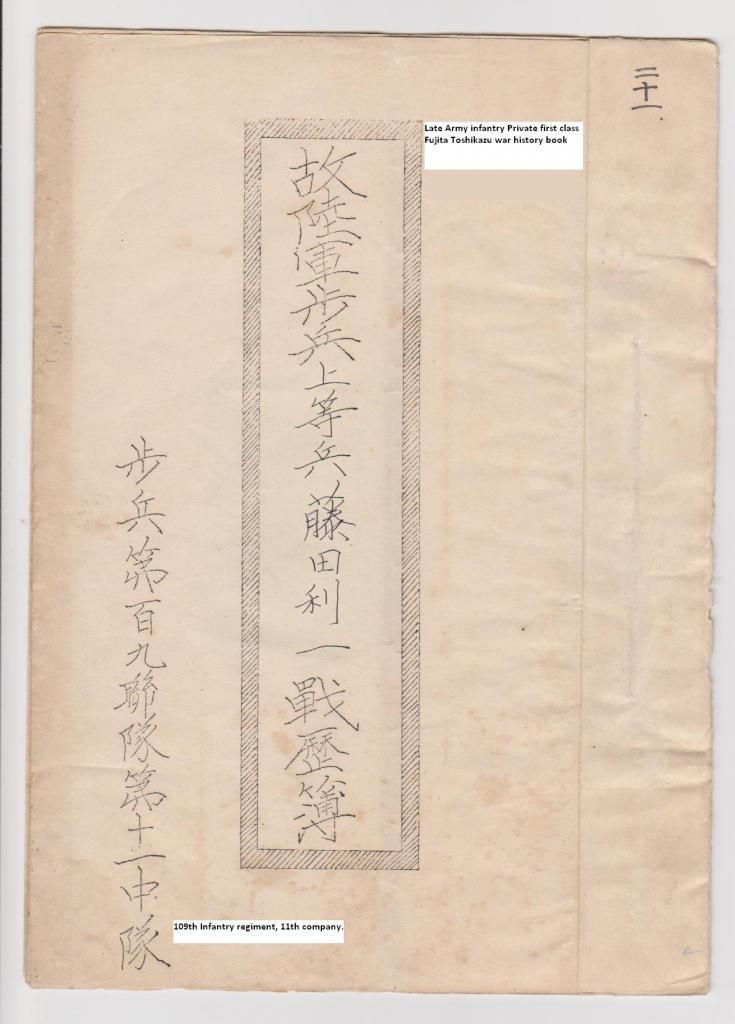
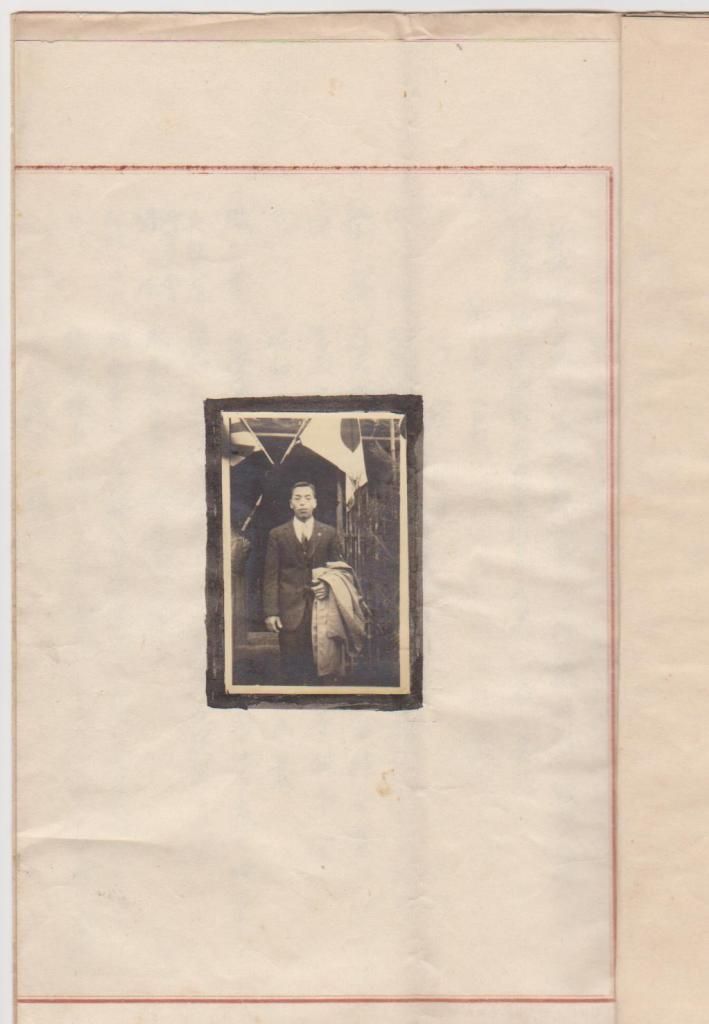
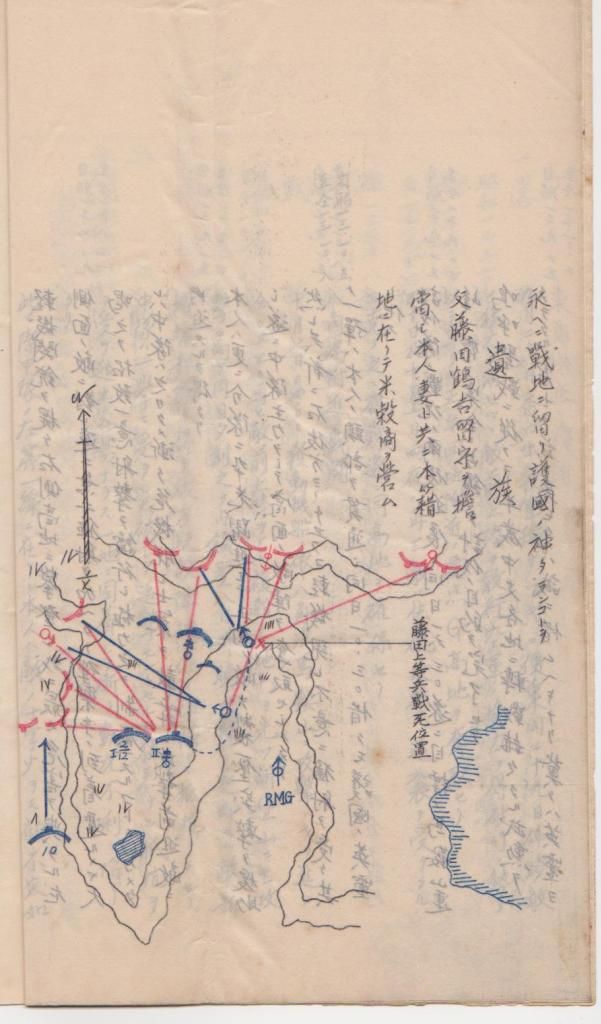
Comment